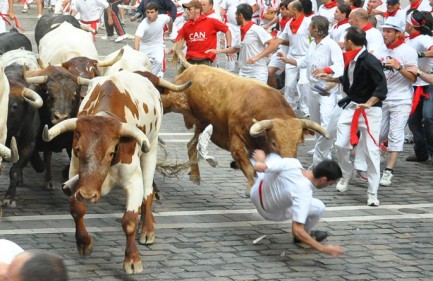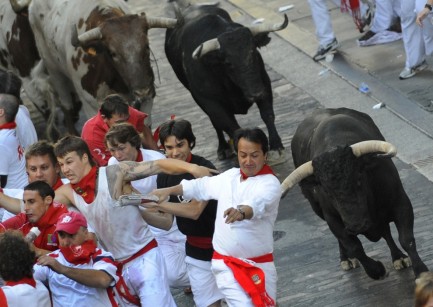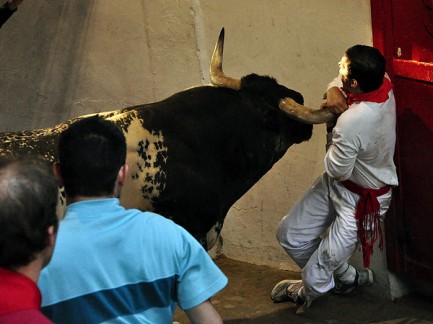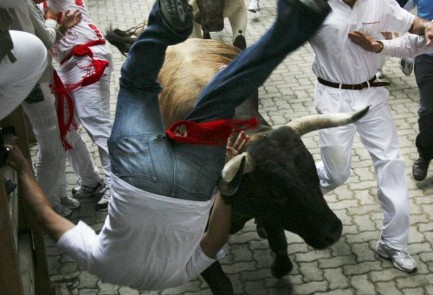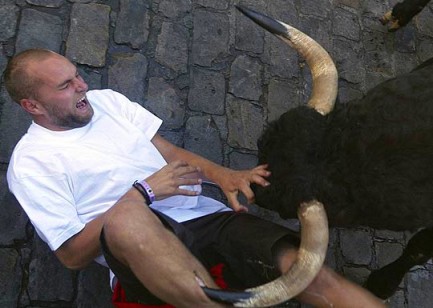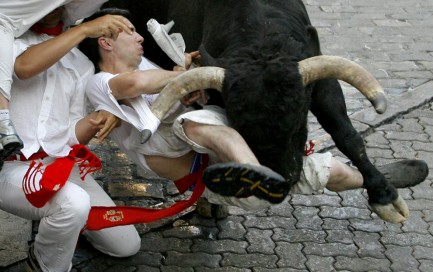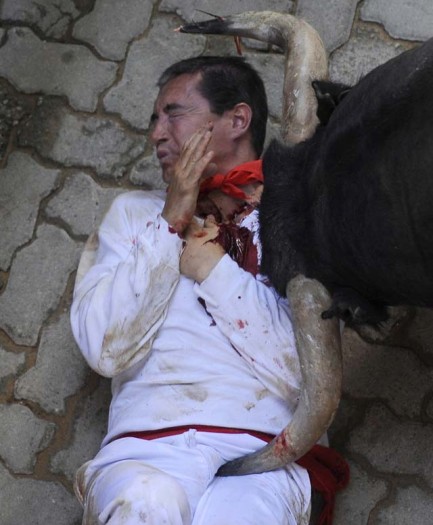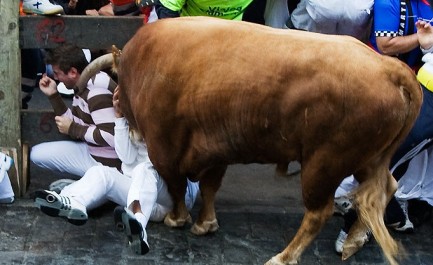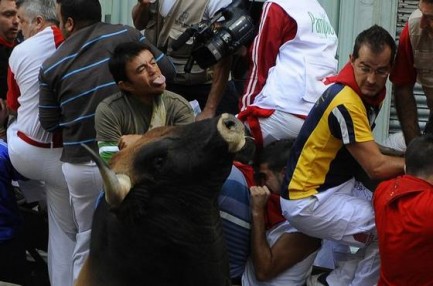| Intl. Notebook | Dec 6 2012 |

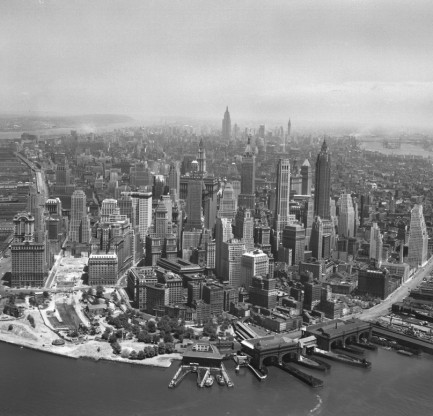
Above is a photo of Manhattan, New York City, in the year 1947, looking from Battery Park toward midtown. Here you see everything—the Staten Island Ferry Building at bottom, Wall Street to the right, the 59th Street Bridge crossing Welfare Island at upper right, and in the hazy distance, the Empire State Building—at that time arguably America’s most recognized symbol. In the aftermath of a war that had destroyed Europe’s and Japan’s industrial capacity, the U.S. was the unquestioned power on the planet, with massive economic might, a military that had taken up permanent residence in dozens of countries, and a growing stock of nuclear weapons. Two years later the Soviets would detonate their first nuclear bomb, shaking the American edifice to its foundation. Meanwhile, all around the world, the seeds of change were taking root. Below is a look at the world as it was in 1947.
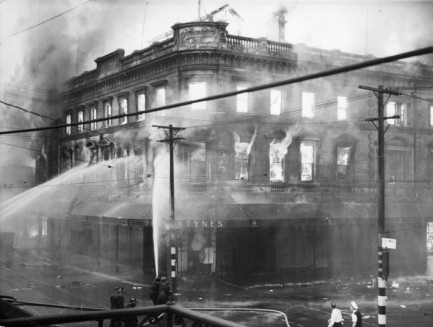
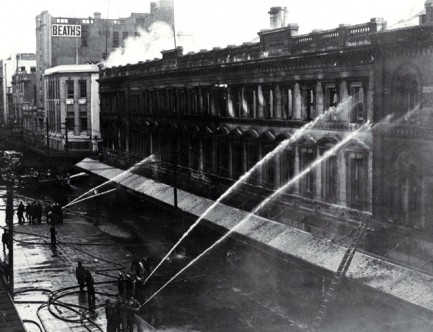
Firemen try to extinguish a blaze in Ballantyne’s Department Store in Christchurch, New Zealand.
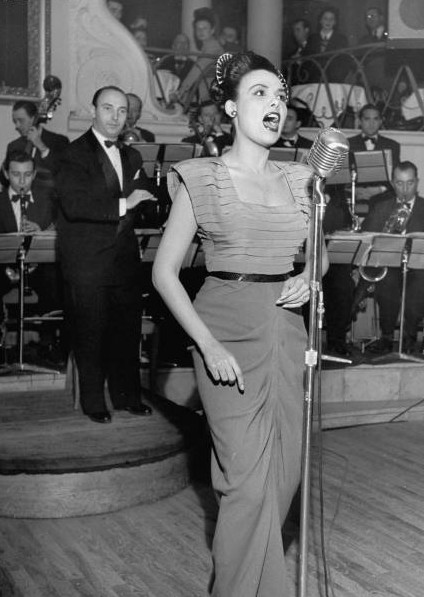
American singer Lena Horne performs in Paris.
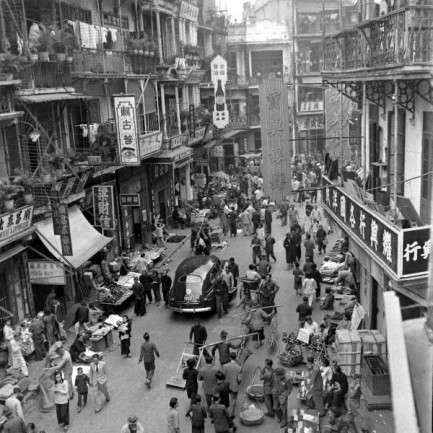
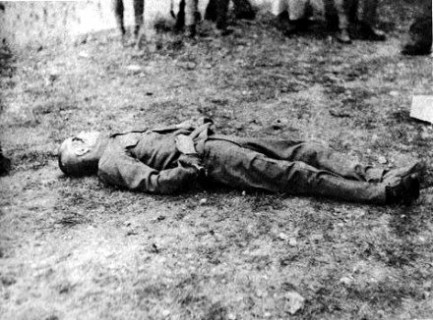
The hustle and bustle of Hong Kong, and the aftermath of the execution of Hisakazu Tanaka, who was the Japanese governor of occupied Hong Kong during World War II.
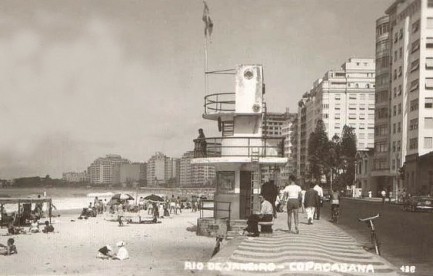
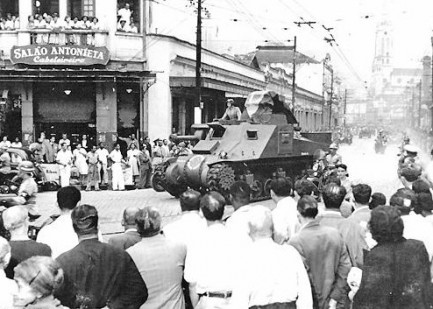
Sunbathers enjoy Copacabana Beach in Rio de Janeiro, and a military procession rumbles along Rua Catumbi.
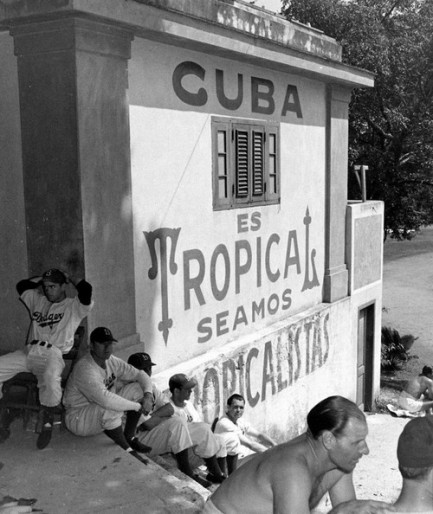
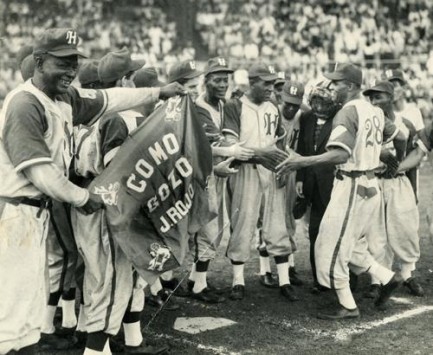
Assorted Brooklyn Dodgers and manager Leo Durocher (shirtless in the foreground) relax at Havana, Cuba’s Estadio La Tropical, where they were holding spring training that year. Second photo, Cuban players for the Habana Leones celebrate the first home run hit at Havana’s newly built Estadio Latinoamericano.
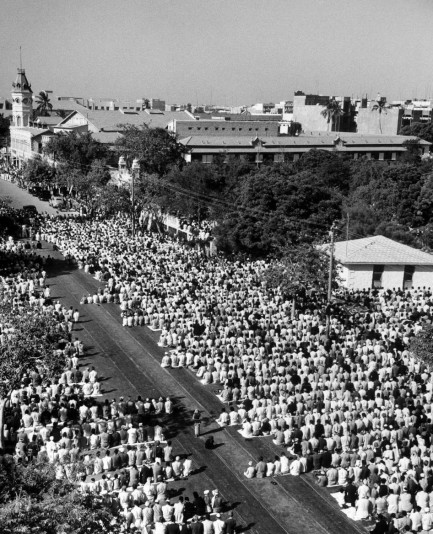
Thousands of Muslims kneel toward Mecca during prayer time in Karachi, Pakistan.
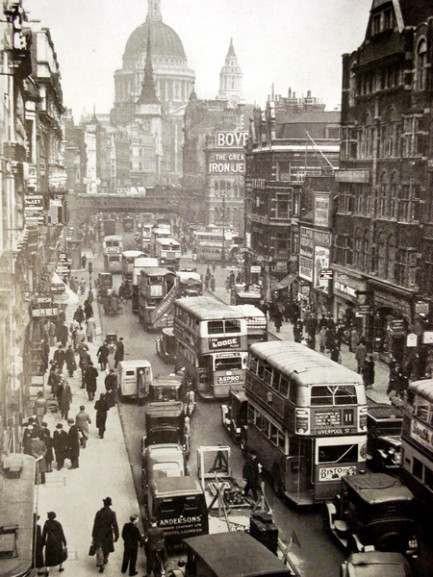
A snarl of traffic near St. Paul’s Cathedral in London.
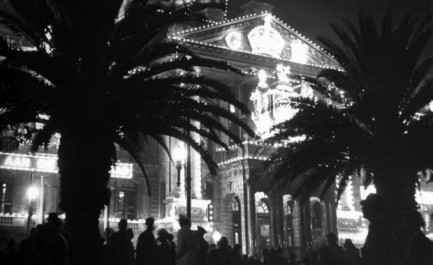
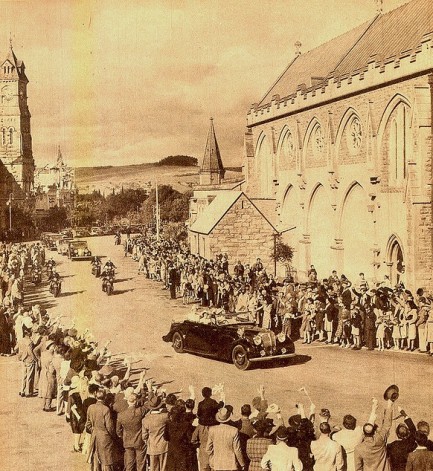
The city hall of Cape Town, South Africa is lit up to celebrate the visit of the British Royal Family. Second photo, during the same South African trip, the royals are welcomed to Grahamstown.
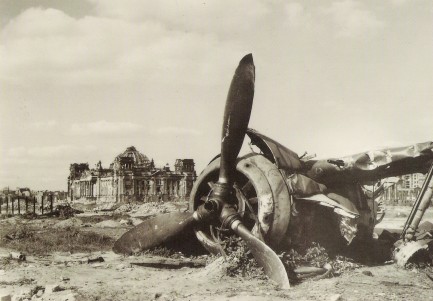
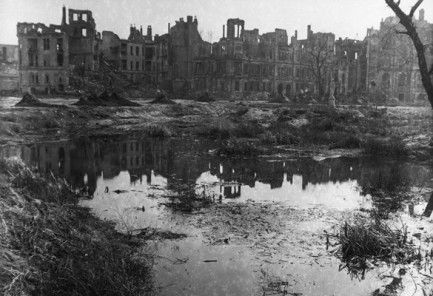
A wrecked fighter plane rusts in front of Berlin’s burned and abandoned parliament building, the Reichstag. Second photo, a shot of ruins in Berlin’s Tiergarten quarter, near Rousseau Island.
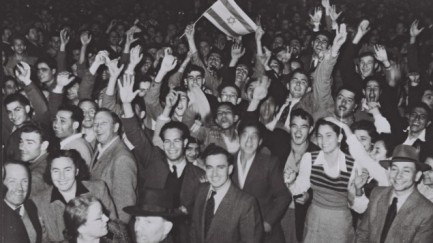
A crowd in Tel Aviv celebrates a United Nations vote in favor of partitioning Palestine.
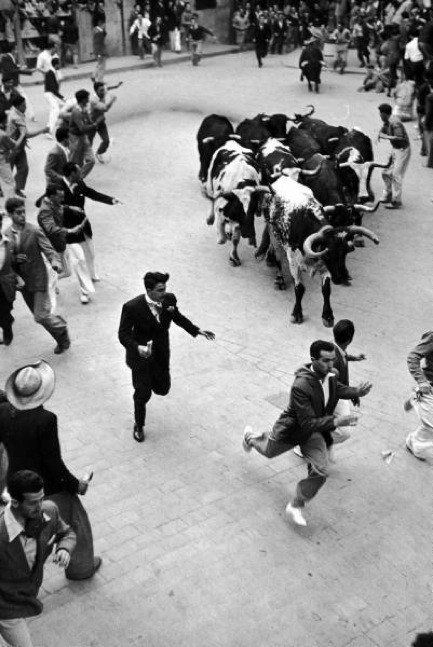
Men and bulls run through the streets of Pamplona, Spain during the yearly Festival of San Fermin.
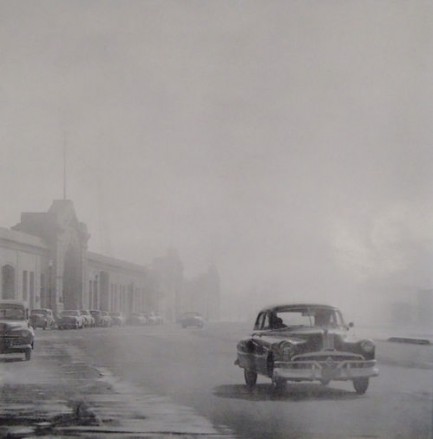
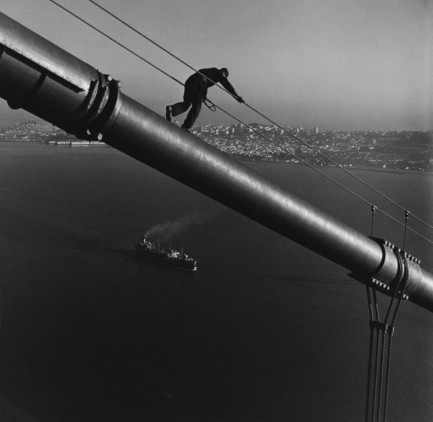
Fog rolls across the Embarcadero in San Francisco; a worker descends from a tower of the Golden Gate Bridge.
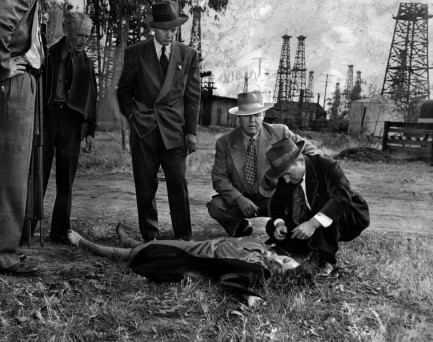
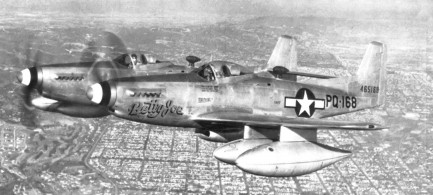
Detectives study the body of a woman found murdered in Long Beach, California. Two P-51 Mustang fighters fly above Los Angeles.
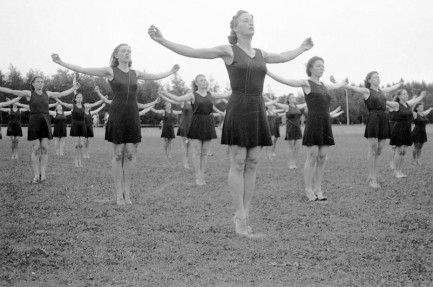
Danish women from Snoghøj Gymnastics School practice in Odense.
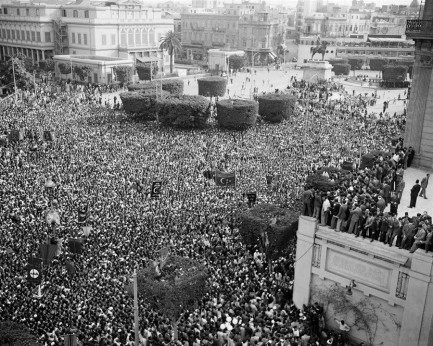
Tens of thousands of protesters in Cairo demonstrate against the United Nations vote in favor of partitioning Palestine.
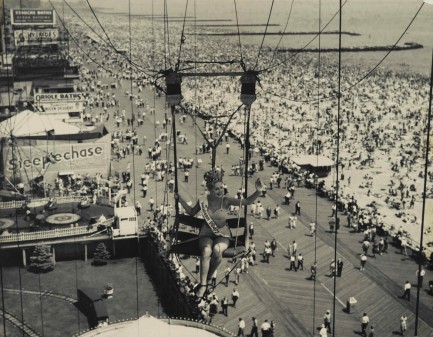
A beauty queen draped with a sash that reads “Modern 1947” is lifted high above the boardwalk in Coney Island, New York.

A woman in Barbados holds atop her head a basket filled with fibers meant for burning as fuel.
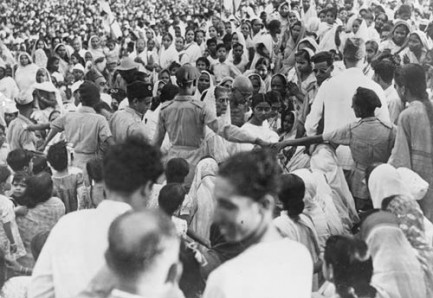
Mahatma Gandhi, his bald head barely visible at upper center, arrives through a large crowd for a prayer meeting on the Calcutta Maidan, India.
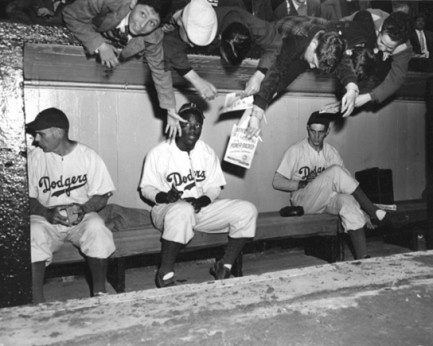
Major League Baseball player Jackie Robinson is hounded for autographs in the dugout during a Brooklyn Dodgers game.
| Intl. Notebook | Jul 11 2012 |

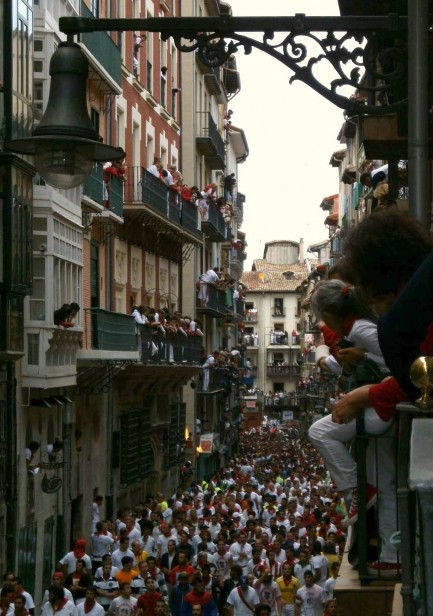
We were so inspired by our time in the Basque town of Pamplona (you may remember we went there before) that today we decided to share some vintage posters celebrating las ferias y fiestas de San Fermín. We watched the encierro, i.e. running, from a first floor balcony on Calle Estafeta, and that’s about as good as it gets, as our photo above shows. As far as the actual bullfights go, we didn't see any. Not that we're opposed. We've been to several over the years and came away with some intense feelings, mostly of sympathy for the animals. But since it isn't our culture, we don't take a stance on the practice's merits or evils. What we do take a stance on is the art of the festival, some of which we've uploaded below. The collection encompasses varying styles of graphic design, but through all the shifts the posters retained an extremely high level of quality for about fifty years. That golden period was followed by an all too typical abandonment of painterly skill, which was replaced in the 1960s by photography, and later by yawn-inducing InDesign and Photoshop technicianship. For that reason, the posters made during the 1970s and forward compare very unfavorably to the early pieces. While the artistic skill to produce great posters is undoubtedly still out there, such art might be more expensive than desktop design, which means that, as in nearly all areas of modern life, a focus on the bottom line tilts the landscape toward mediocrity. But let's not worry about that. The posters below are glorious, just like the long nights and crazy days of San Fermin.
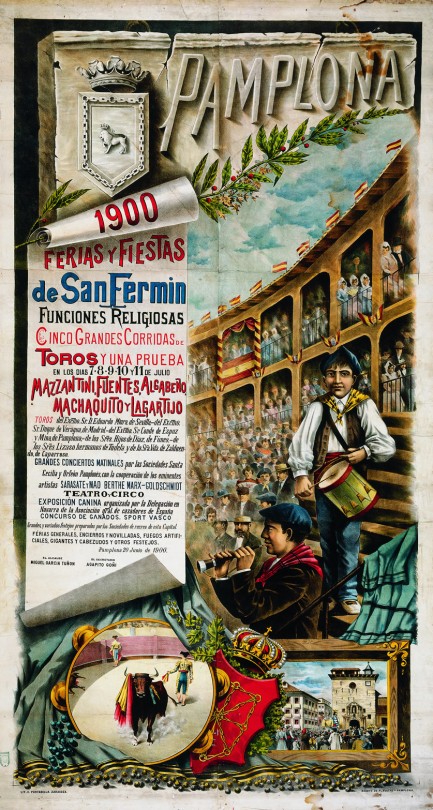
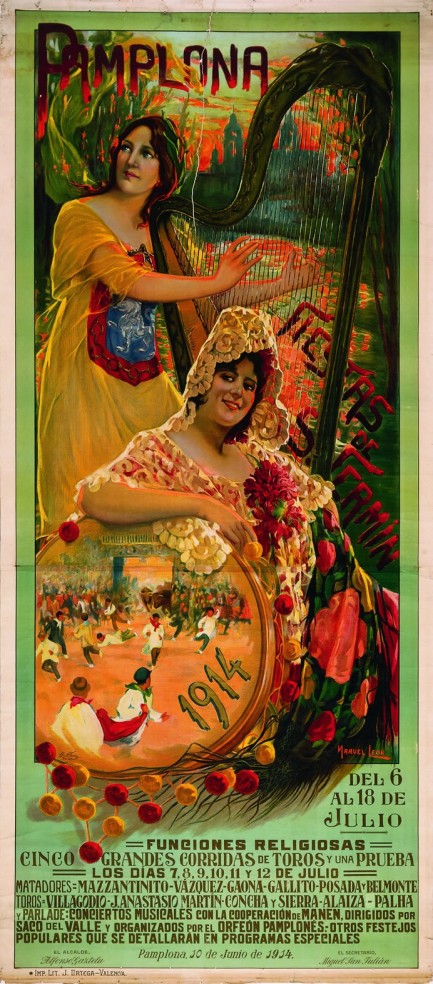
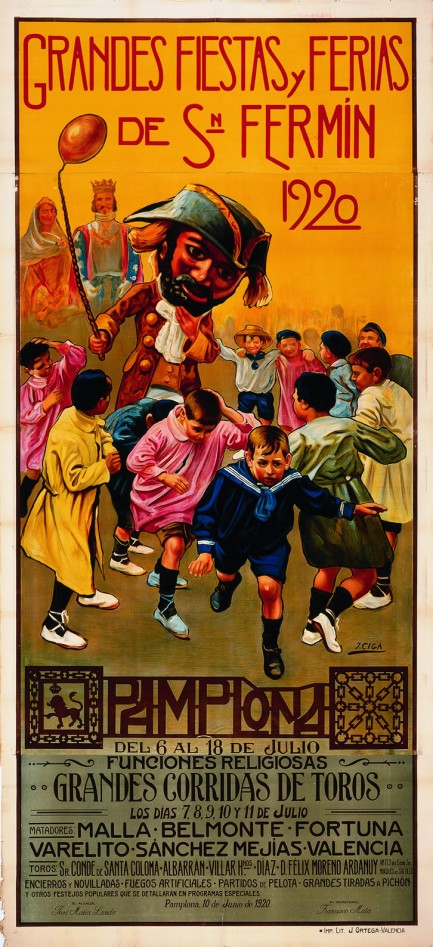
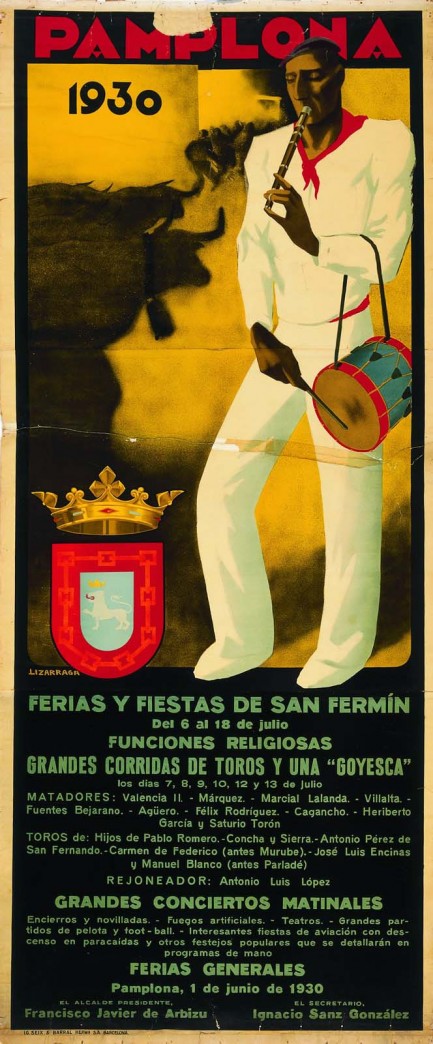
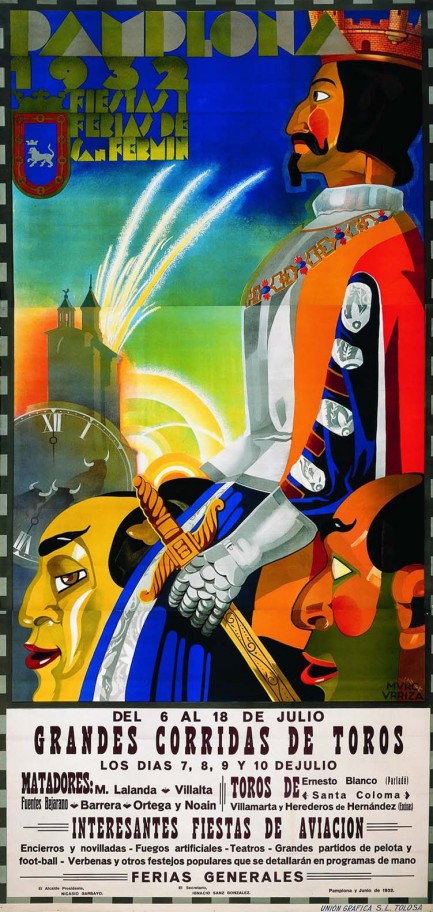
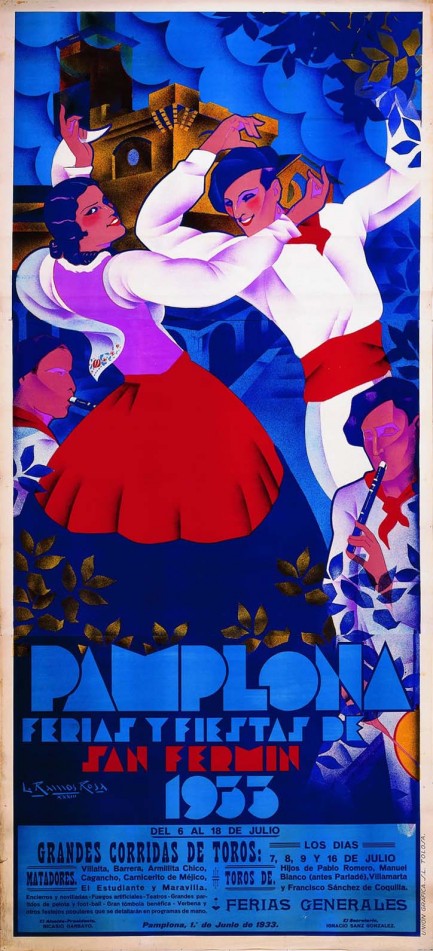
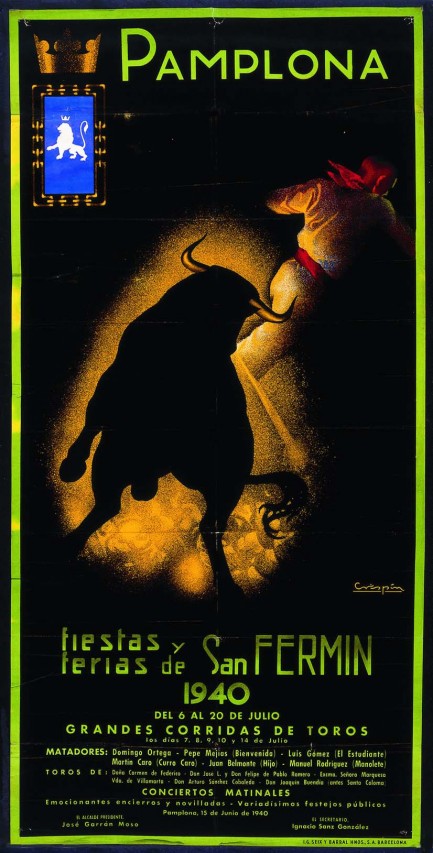
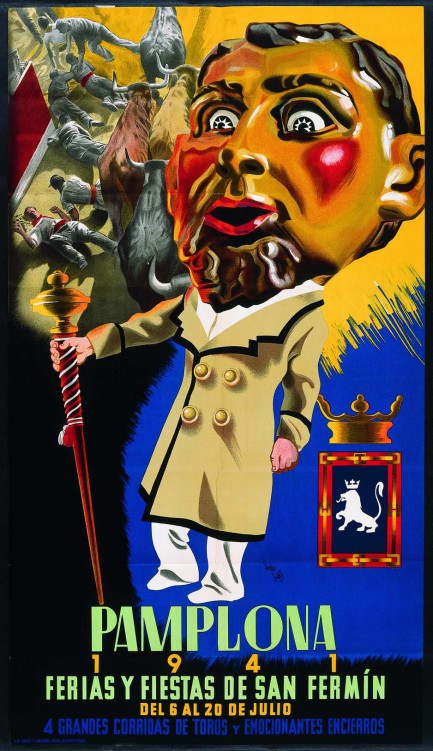
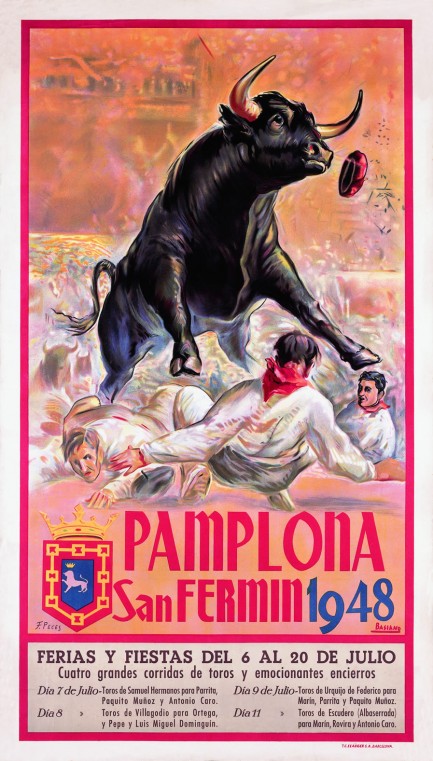
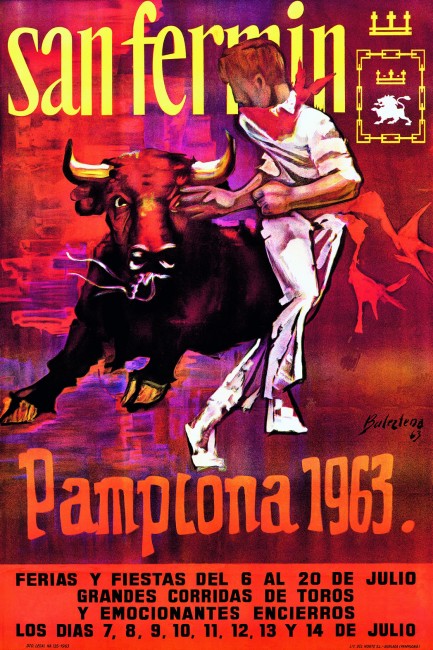
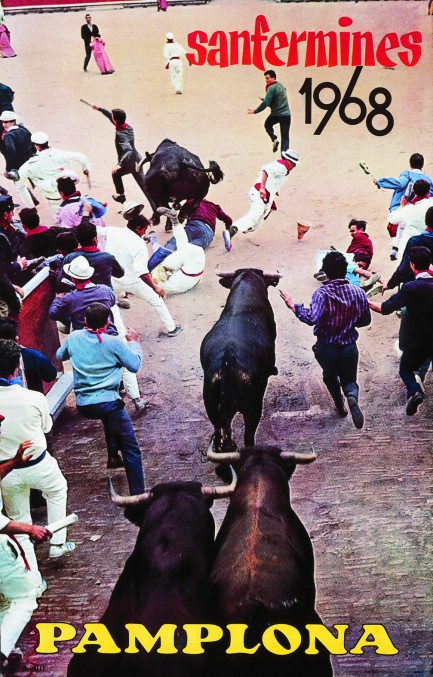
| Intl. Notebook | Jul 11 2012 |

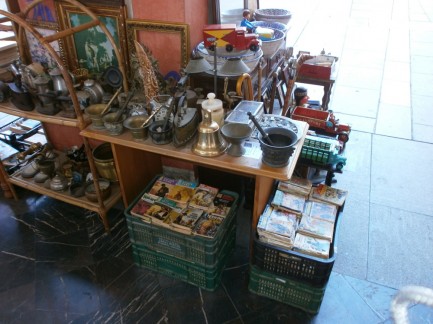
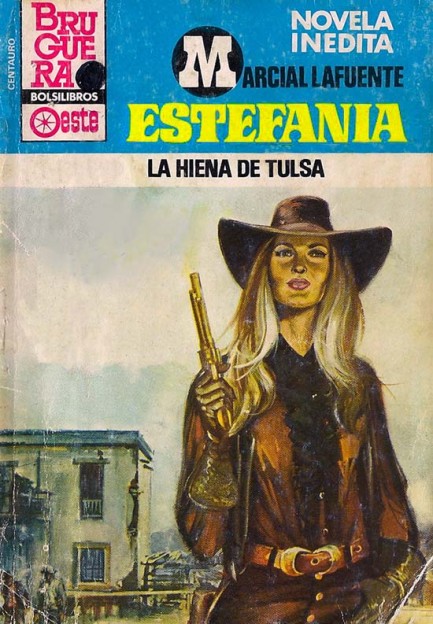
| Intl. Notebook | Feb 22 2012 |

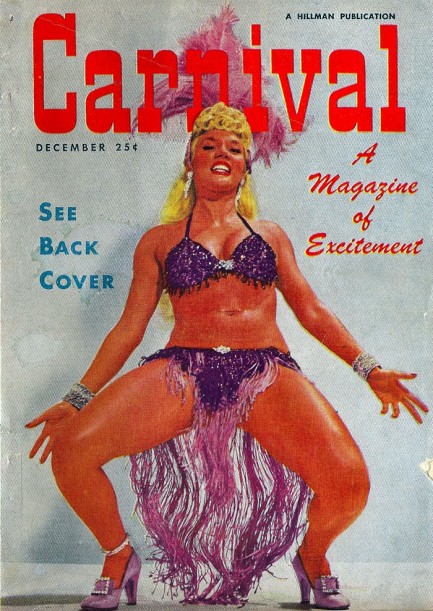
At the end of last month we posted a few images of Bettie Page that hadn’t appeared online before. They came from an issue of Carnival we were too lazy too scan in its entirety at the time. Today we have the rest of that great issue, vol. 1, no. 2, published out of Chicago, U.S.A. by Hillman Periodicals, who were the same people behind the magazine Show. The cover star is burlesque queen Lilly Christine, aka The Cat Girl, and she reappears in all her wild-eyed glory in a photo set we've placed at the very bottom of this post. We’ve seen at least two of those photos before in other magazines, however Carnival claims it was an exclusive set, shot especially for them, and indeed, that could be true, since theirs appeared before the others we saw.
After a peek behind the scenes of the Miss Universe pageant, readers get a profile of Ernest Hemingway’s most recent trip to Spain. Hemingway was visiting the Festival of San Fermin in the Basque Country town of Pamplona in order to see how his favorite sport of bullfighting had fared in the years since he’d last visited. Since the text in these digest-sized magazines scans large enough to be legible, you can read what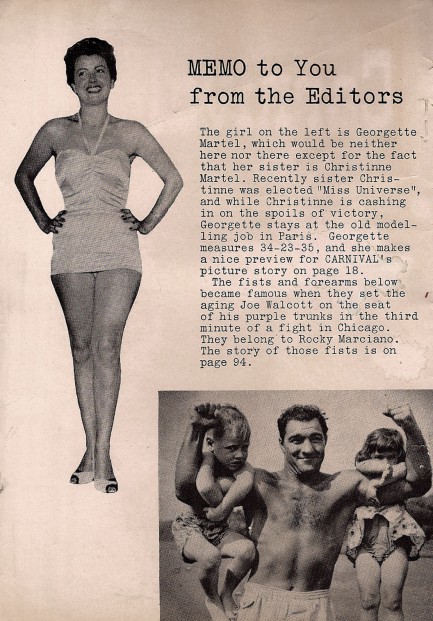
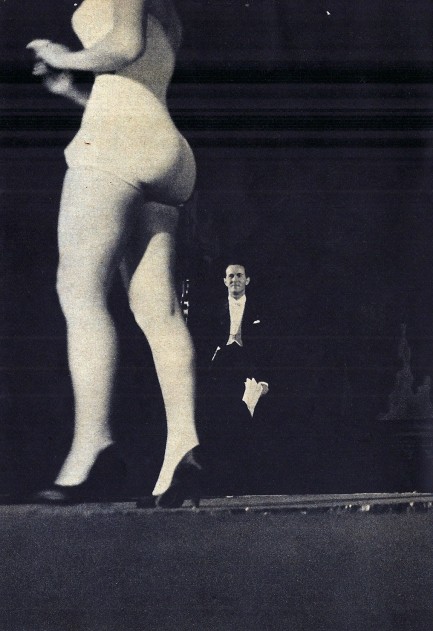
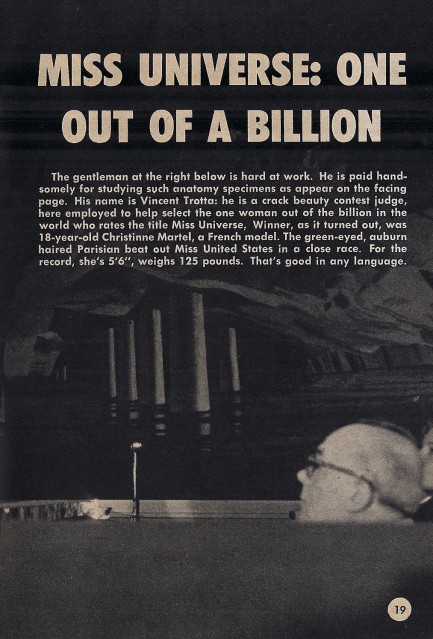
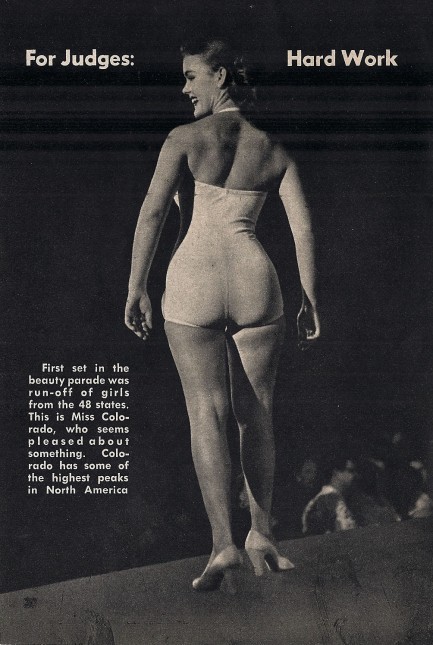
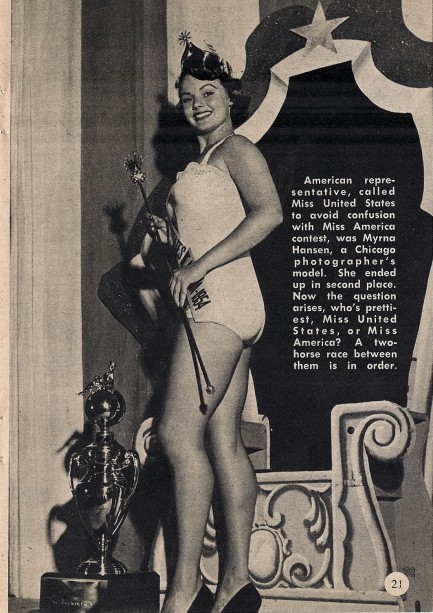
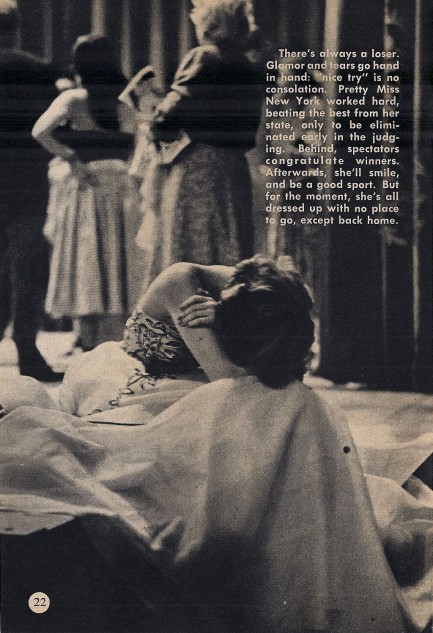
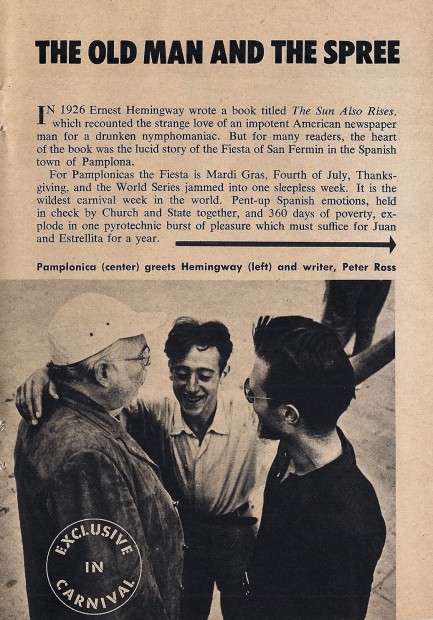
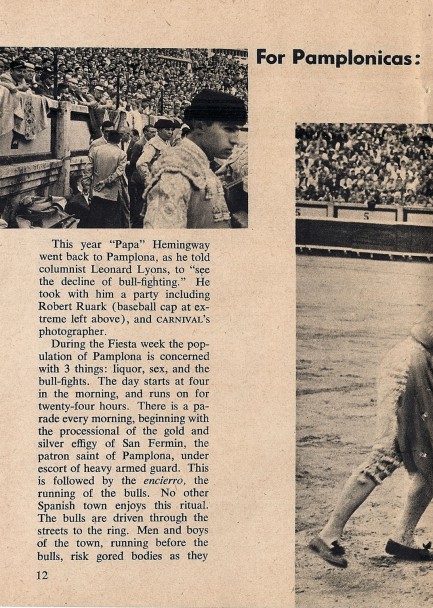
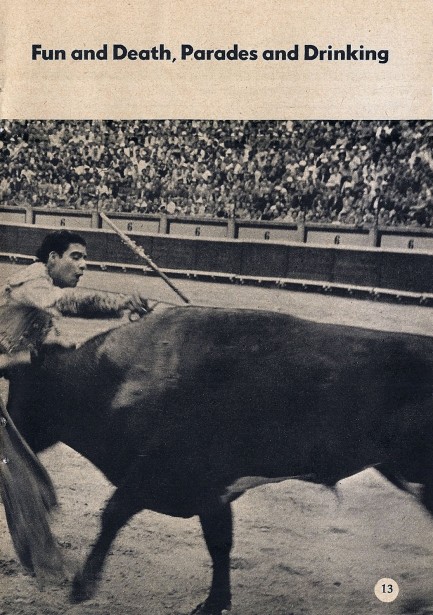
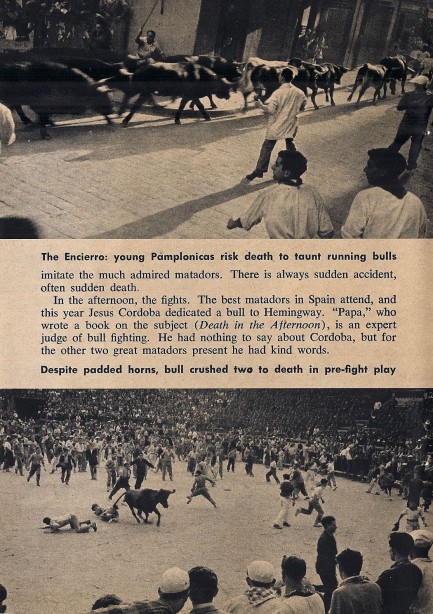
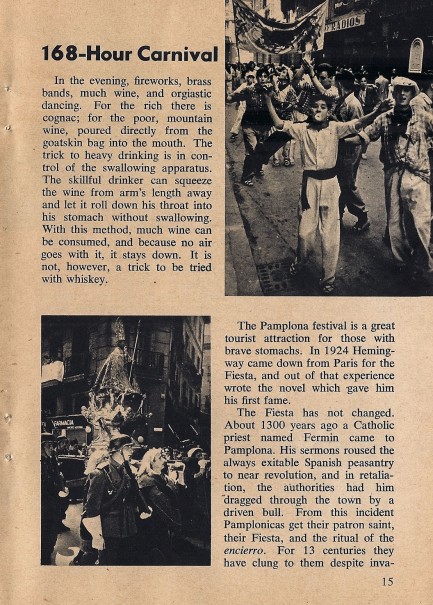
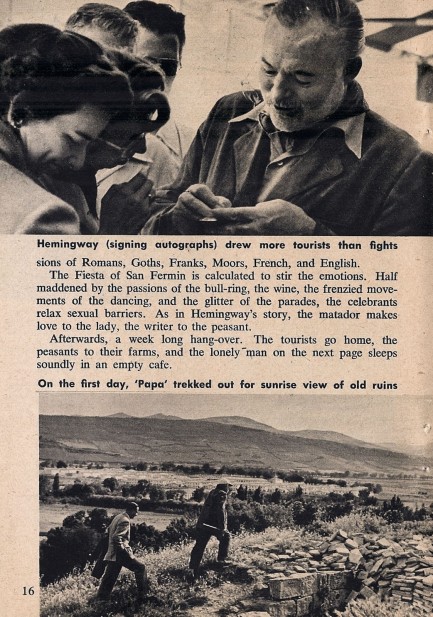
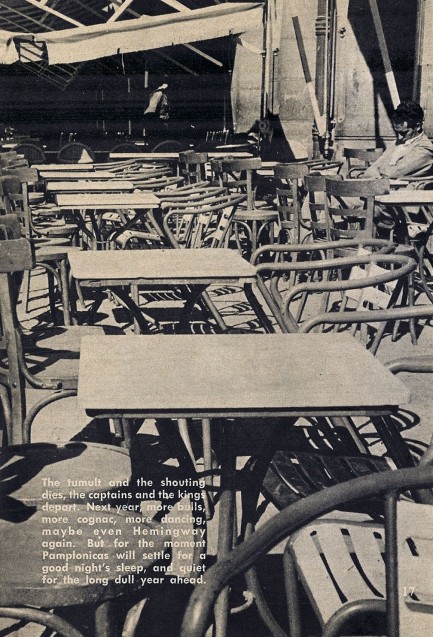 Carnival says about the famed festival yourself. We will note, however, that the writer’s description of Pamplona as dull when San Fermin isn’t happening is wrong. Spain in general, and the Basque Country in particular, are never dull. Trust us—we’ve spent a lot of time there. If you’re interested, you can read our firsthand observations of San Fermin here and here.
Carnival says about the famed festival yourself. We will note, however, that the writer’s description of Pamplona as dull when San Fermin isn’t happening is wrong. Spain in general, and the Basque Country in particular, are never dull. Trust us—we’ve spent a lot of time there. If you’re interested, you can read our firsthand observations of San Fermin here and here.
Carnival next presents readers with photos of dancer Nejla Ates, whose short set begins just below. We first saw one of these shots in an issue of Uncensored dating from June 1954, but once again Carnival seems to have gotten there first—their photos are from 1953. Ates, who for some reason often appears online unidentified, was Romanian born of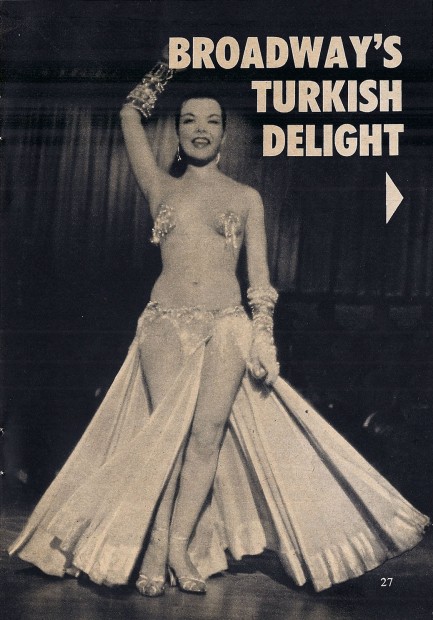
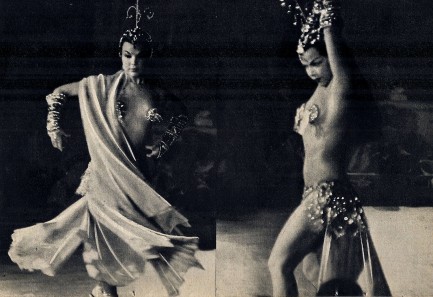
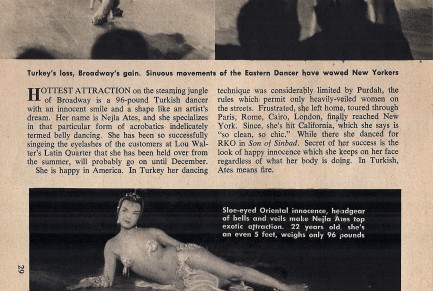 Tatar descent, and danced her way through Cairo, Rome, Paris, and London, before finally gaining international fame in New York City. She appeared in three American films during the 1950s, and was the go-to cover model for Middle-Eastern and bellydancing themed album sleeves, but despite her successes suffered the usual slate of dead end affairs and romantic heartbreaks with such men as, among others, Billy Daniels, George Sanders, and Gary Crosby.
Tatar descent, and danced her way through Cairo, Rome, Paris, and London, before finally gaining international fame in New York City. She appeared in three American films during the 1950s, and was the go-to cover model for Middle-Eastern and bellydancing themed album sleeves, but despite her successes suffered the usual slate of dead end affairs and romantic heartbreaks with such men as, among others, Billy Daniels, George Sanders, and Gary Crosby.
Following Ates is a photo feature on American actress and party girl Barbara Payton, who burned a swath through Hollywood during the 1950s, bedding co-stars, feuding with her studio, and generally raising a ruckus before eventually drifting into prostitution and dying at 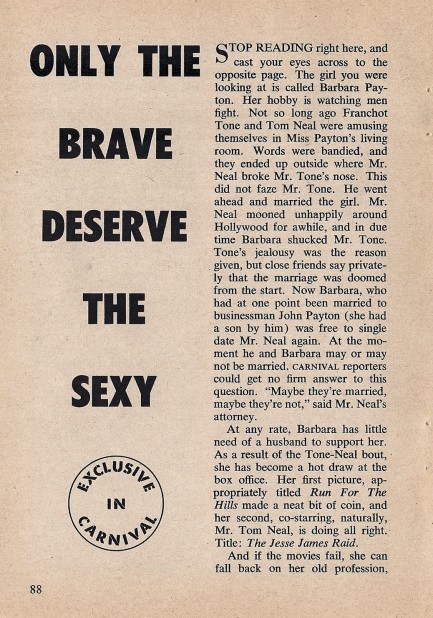
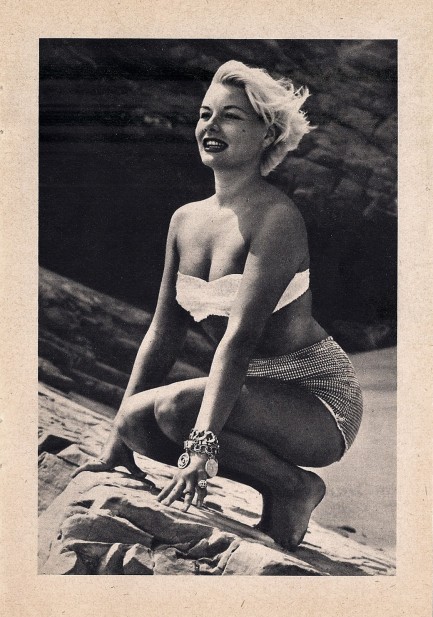
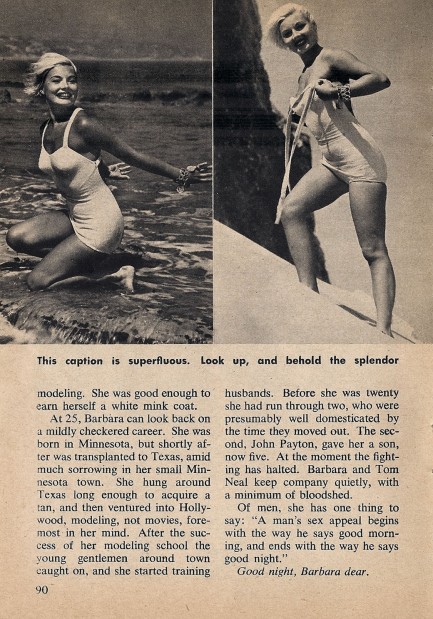
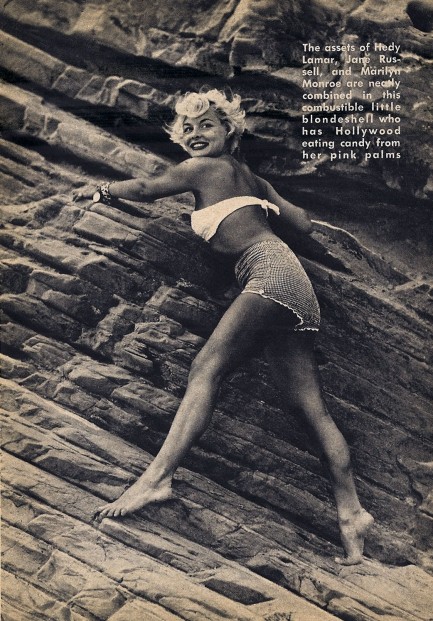 age thirty-nine of heart and liver failure. She’s described here as possessing the “assets of Hedy Lamarr, Jane Russell and Marilyn Monroe” all at once. Not sure about that, but we'll be finding out more about her later, because we will be examining her very pulpish life story in detail.
age thirty-nine of heart and liver failure. She’s described here as possessing the “assets of Hedy Lamarr, Jane Russell and Marilyn Monroe” all at once. Not sure about that, but we'll be finding out more about her later, because we will be examining her very pulpish life story in detail.
Next you get a great close-up photo of Jersey Joe Walcott having a disagreement with Rocky Marciano’s fist. Does that shot also look familiar? Perhaps because it was the cover of a January 1953 National Police Gazette. We had no idea that the fight was considered controversial at the time. Apparently, many thought Walcott took a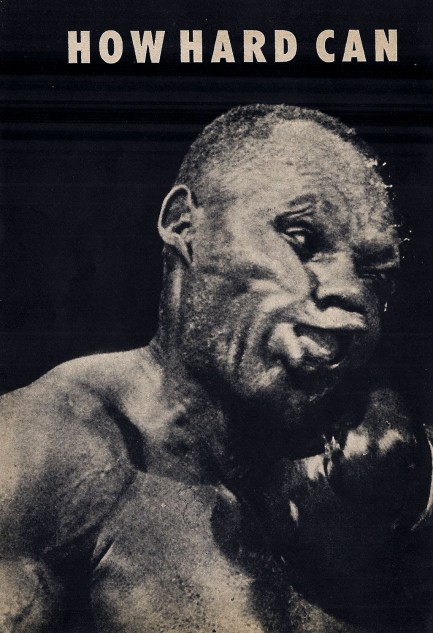
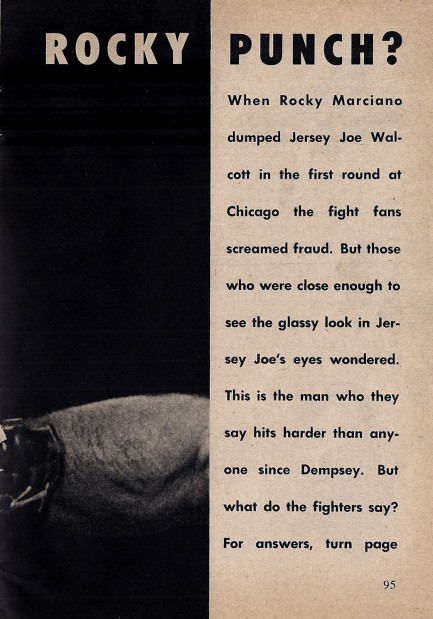 dive. Since this photo is of the actual the shot that sent Walcott to the canvas, we have to respectfully disagree. It’s lights out, and anyone can see that. In any case, you can take a gander at that Gazette cover and learn a bit about Marciano and Walcott here.
dive. Since this photo is of the actual the shot that sent Walcott to the canvas, we have to respectfully disagree. It’s lights out, and anyone can see that. In any case, you can take a gander at that Gazette cover and learn a bit about Marciano and Walcott here.
A few more treats: panel 24, just below, contains a hot shot of Marilyn Monroe at a charity baseball game; panel 26 features actress Sheree North, who doesn’t look very impressive, which means you should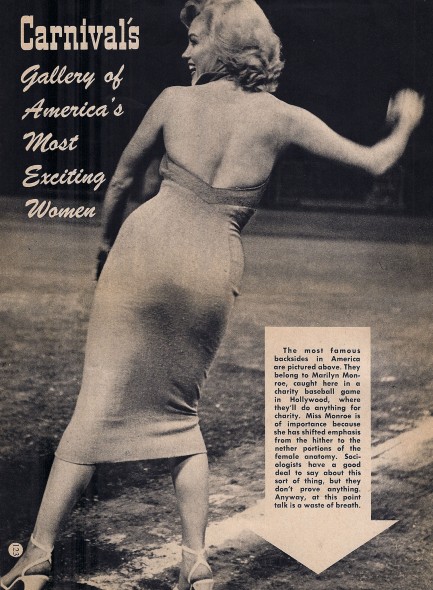
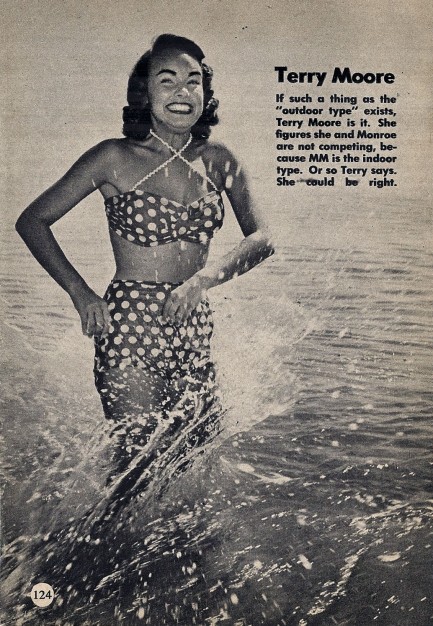
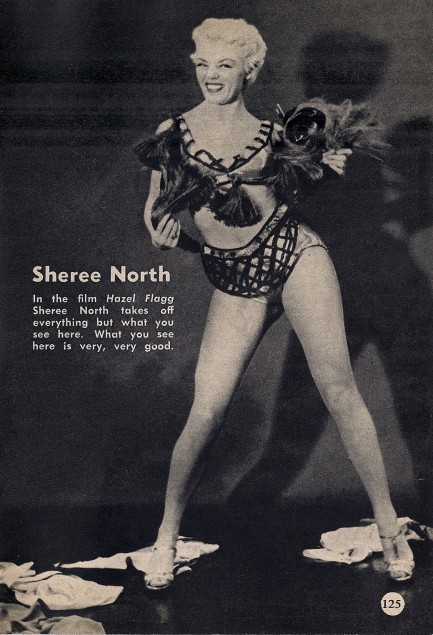
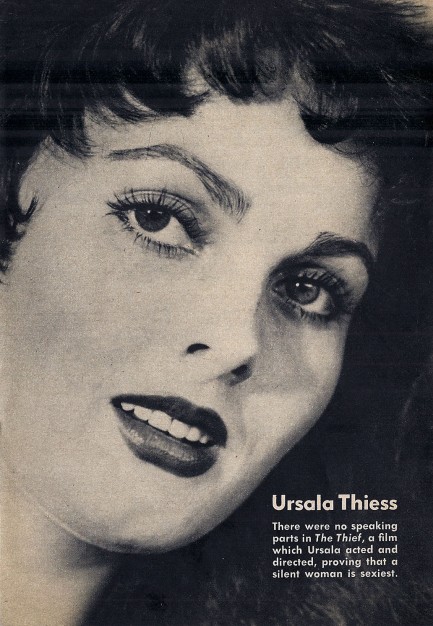
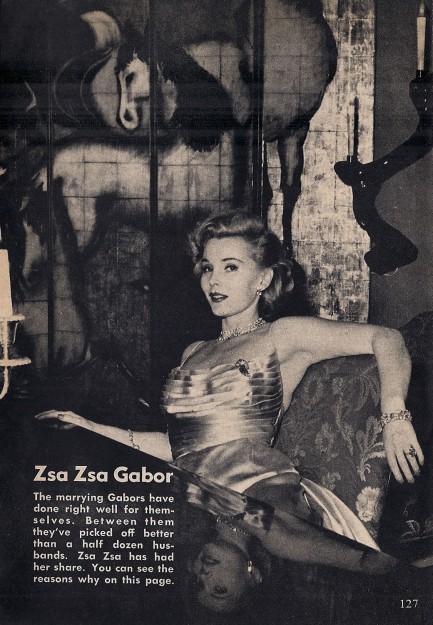
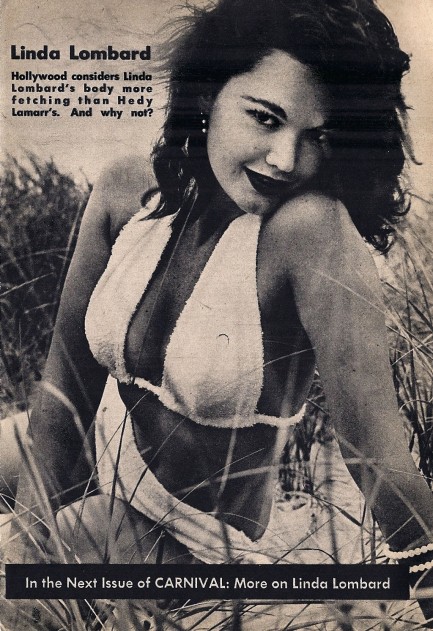 click over to our lovely femme fatale post on her here and get a sense of what a knockout she really was; and lastly, in panel 28, above, you get a killer shot of Zsa Zsa Gabor, who, believe it or not, was already nearly forty at the time and had been married three times on the way to her final tally of nine.
click over to our lovely femme fatale post on her here and get a sense of what a knockout she really was; and lastly, in panel 28, above, you get a killer shot of Zsa Zsa Gabor, who, believe it or not, was already nearly forty at the time and had been married three times on the way to her final tally of nine.
Looking at all these pages and visiting the accompanying links, you perhaps get a sense of how the mid-century tabloid industry was fueled by handout photos, with all the publications using the same shots but concocting editorial angles to create the illusion that the images were exclusive. But in Carnival’s case, it does seem to have published many of these images first. It billed itself as “a magazine of excitement”, and we have to agree. It’s also a magazine that, because of its tightly bound construction, we had to destroy in order to scan. But even though this particular issue of Carnival is now only loose leaves scattered across the room, there are other issues out there, and we’ll have some of them later, hopefully.
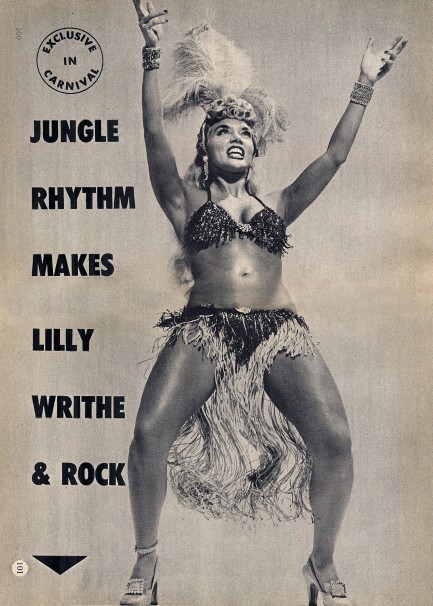
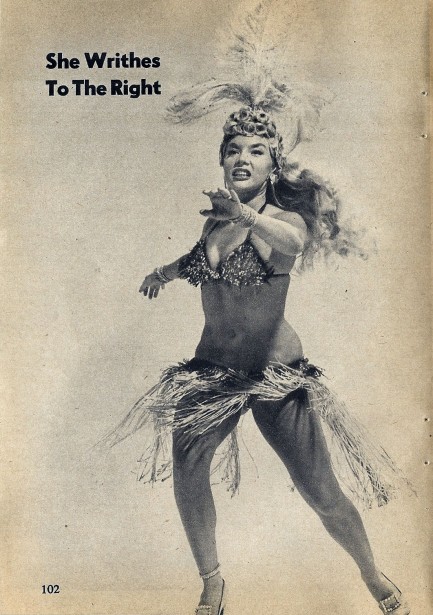
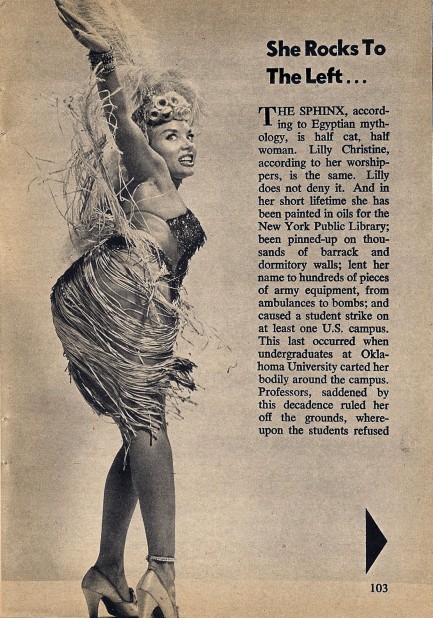
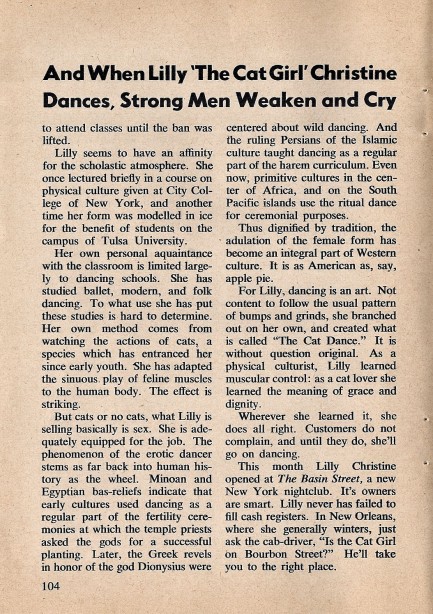
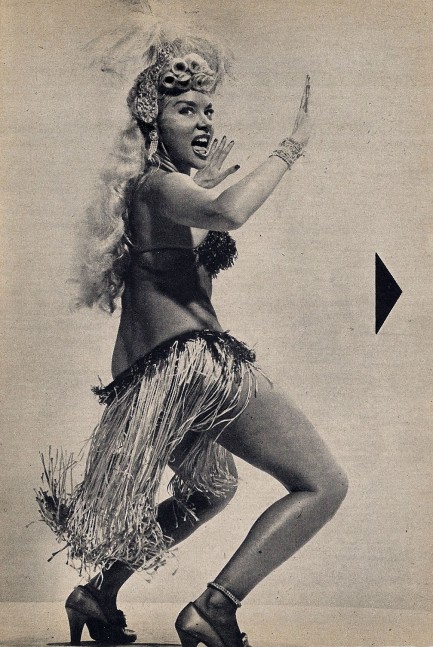
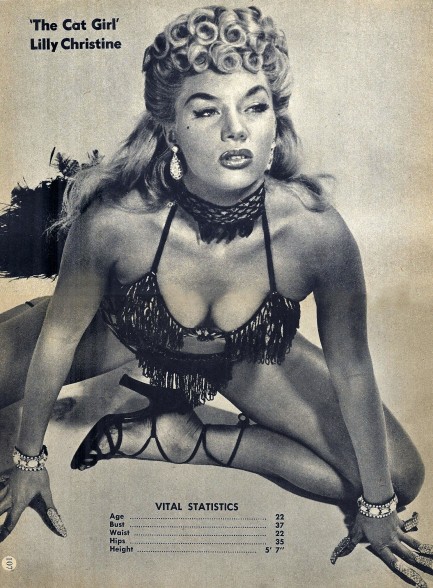
| Intl. Notebook | Jul 9 2010 |

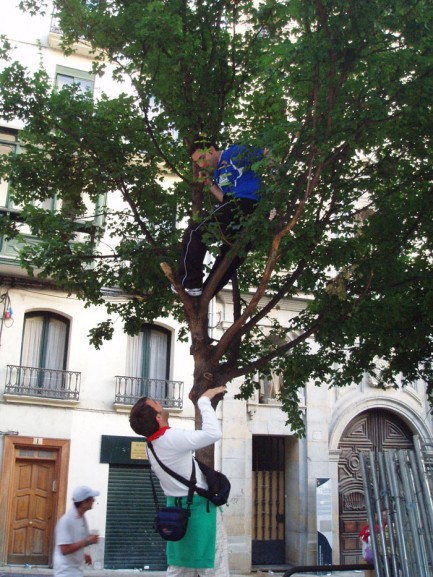
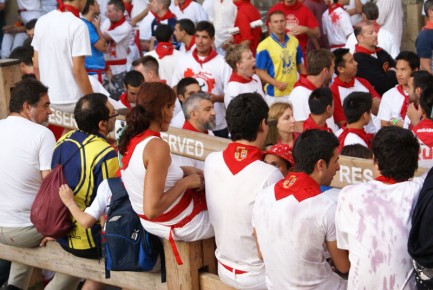
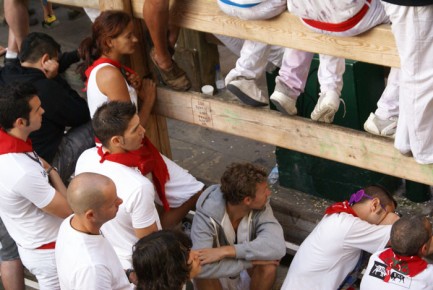
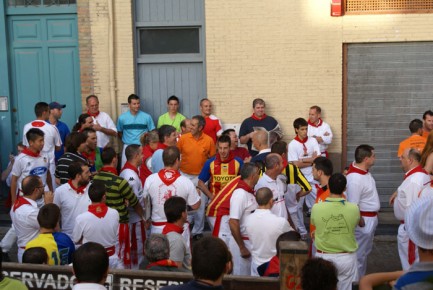
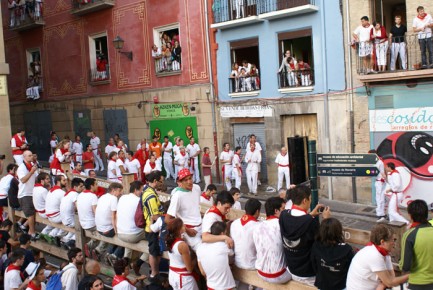
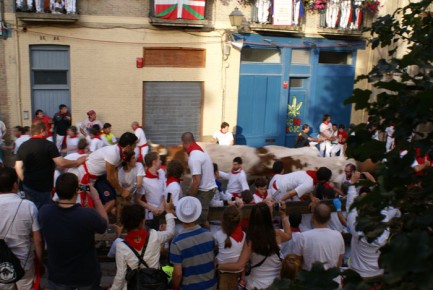
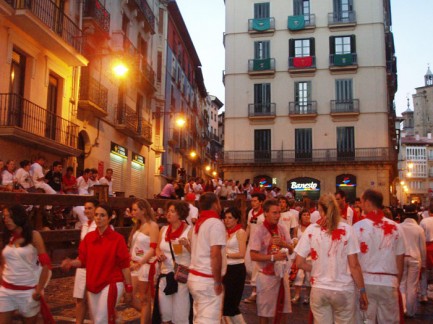
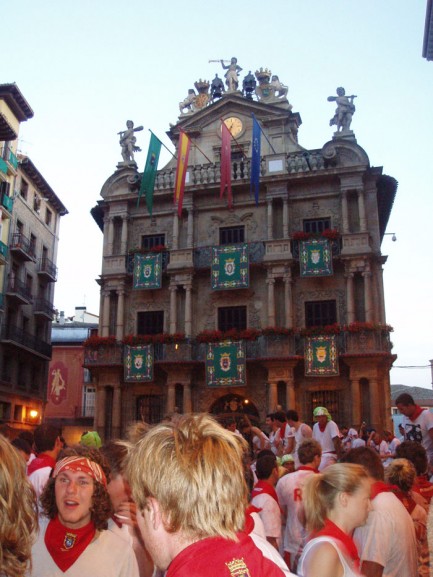
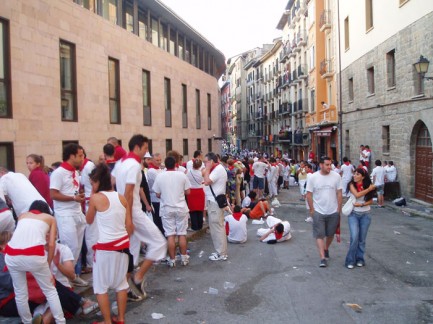
| Intl. Notebook | Jul 8 2010 |

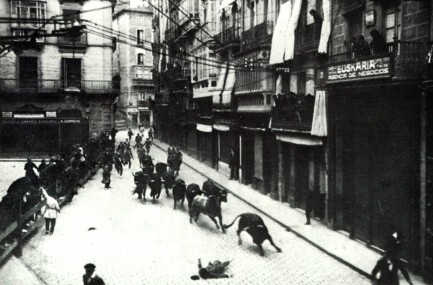
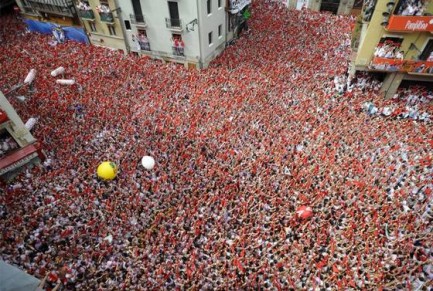
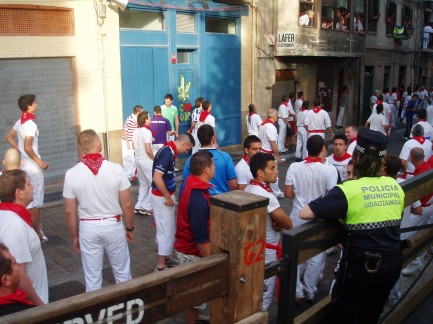
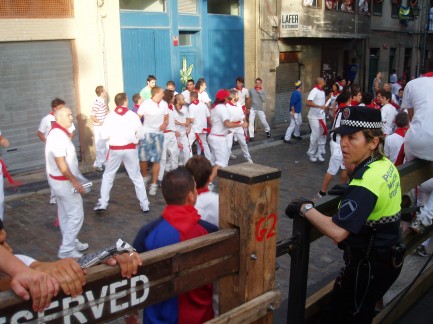
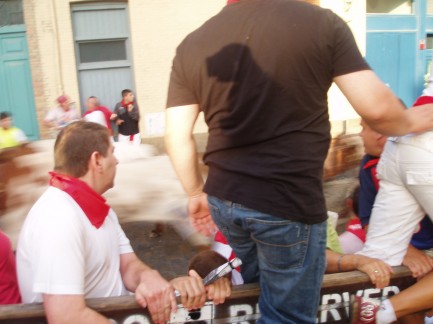 You’ve probably heard that the encierro is dangerous, but the truth of that depends on your idea of danger. Deaths average two per decade, including one last year. That isn't going to get most people quaking in their espadrilles, but injuries are common—this morning there were four minor horn wounds, one broken ankle and, we’d guess, several dozen bruises and scrapes. So the question is, how do you like those odds? The odds for the bulls are not so good—six will be killed in the plaza de toros this evening. We won’t bother with any polemics about the tradition of bullfighting, or animal murder, depending on your view. We’re not from Spain, thus we don’t feel we have the right to comment. How’s that for a refreshing attitude?
You’ve probably heard that the encierro is dangerous, but the truth of that depends on your idea of danger. Deaths average two per decade, including one last year. That isn't going to get most people quaking in their espadrilles, but injuries are common—this morning there were four minor horn wounds, one broken ankle and, we’d guess, several dozen bruises and scrapes. So the question is, how do you like those odds? The odds for the bulls are not so good—six will be killed in the plaza de toros this evening. We won’t bother with any polemics about the tradition of bullfighting, or animal murder, depending on your view. We’re not from Spain, thus we don’t feel we have the right to comment. How’s that for a refreshing attitude?